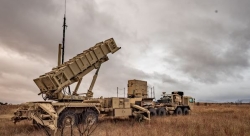French MoD orders 332 VBCI IFVs from Nexter Systems, Renault Trucks Defense

The Minister of Defence, Hervé Morin, today announced an order for 332 VBCI armoured infantry combat vehicles for the Army. The order was awarded by the defence procurement agency, Délégation générale pour l’armement (DGA) to a joint venture company owned by Nexter Systems and Renault Trucks Defense. This latest order increases to 630 the number of VBCIs on order for the Army, as specified by the White Paper on defence and national security. The total cost of the VBCI program, including development and pre-production, is 2.86 billion euros. (approx. $4.1 billion). Launched in 2000, the VBCI program is now in full-scale production, and over 100 vehicles have now been delivered. The first combat unit to convert to the VBCI, the 35th Infantry Regiment stationed in Belfort, in Eastern France, paraded with its new vehicles in Paris, during the Bastille Day (July 14th) celebrations. The 2009-2014 Military Program Law emphasizes the need for the improvement of combat equipment, and in particular that of the Army. The VBCI is a fully-developed product that meets current operational requirements in terms of protection and growth potential. Intended to replace the tracked AMX-10P, the VBCI is an all-terrain vehicle fitted with eight drive wheels that is being procured in two basic versions: command post (VPC) and infantry combat vehicle (VCI). The latter version, of which 520 have been ordered, is fitted with a turret armed with a 25mm automatic gun and can carry an 11-man infantry squad. Weighing about 30 tonnes in combat configuration, the VBCI can reach a maximum road speed of 100 kph, and will be air-transportable by the future A-400M transport aircraft. Designed as a “life-support base” for combat infantrymen in the field, the VBCI is fitted with a high degree of protective equipment, including an NBC filtration system. Its armour plate can withstand direct impacts from medium-calibre weapons, artillery shrapnel and improvised explosive devices (IEDs).










